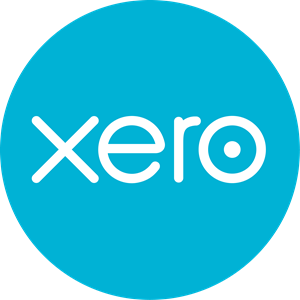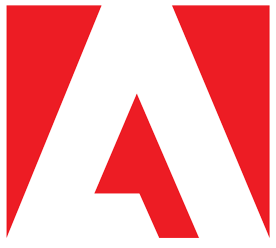How We Created A $1.8M/Year Product Management Course
Hello! Who are you and what business did you start?
My name is Ian Lunn and I am one of the Founding Directors of Product Focus, a leading global provider of product management courses in the UK, US, and Europe.
We provide training for product managers and product management teams, teaching them skills and providing the tools to excel in product management. We also review the product management roles and processes in companies to help them understand how to improve performance. We’re all about helping individuals and businesses deliver world-class product management. Over the past 15 years, we’ve trained thousands of product people and are now the European leaders in product management training running multiple courses every week.

What's your backstory and how did you come up with the idea?
My co-founder Andrew Dickenson and I founded Product Focus, after seeing so many companies struggle with achieving high-quality product management. We knew they could do better and that we could help them to deliver world-class product management. We both had a background in product management and marketing, working for several global tech brands, including Vodafone, Orange, Lucent Technology, Cable & Wireless, and Logica.
Having run several private training courses, the first of our public courses took place in London in October 2006. That course was called ‘Product Management and Product Marketing for technology-based products’. Its nine modules still form the basis of many of our course options today.
Startups don’t fail because the product isn’t a great idea, but because not enough time is put into making them work. Of course, that's the biggest challenge in a startup because you're always in a hurry!

We expanded into Europe in 2009, running that same course in the Netherlands, and grew over the next decade to deliver training in cities across Europe. Highlights include launching our industry-recognized Product Manager certification in 2014, reaching 20,000 subscribers for our product management resources in 2018, launching German-language training in August 2018, and making it across the pond to run our first public course in New York in early 2019, completing our global footprint of training across Europe, Asia, Africa, and the USA.
Take us through the process of designing your initial product
Our product is a training course so the main process, in the beginning, involved coming up with the course structure and then thinking about the exercises and learning points we wanted to cover in each of the nine modules. It didn’t take long to develop the initial course, but it has matured significantly since then.
The first few iterations of the course evolved a lot as we learned so much with each delivery about what worked and what didn’t - I always say, I thought I knew what I was talking about with product management but it's not until you start teaching that you realize how much more there is to learn! That was 15 years ago now though, and since we finalized the course, those nine modules we chose at the start have stayed the same because best practice for product management hasn’t changed. That being said, we regularly review and evolve the content as we gain new insight and research from the industry - there’s little in product management that we haven’t come across in our 15 years.
The final lesson is having patience and keeping at it. A lot of hard work goes into building any business and unfortunately, there’s no magic secret. You might be lucky and have overnight success but usually, it takes time for things to have an effect
We’ve created a very stable course offering, providing face-to-face training across the globe, but when COVID hit, we couldn’t be in classrooms anymore. That was the bulk of our business so we had to work hard to move everything online and ensure we were still providing the best learning experience for our delegates. It was a big process, but we followed the same approach as we did at the beginning; getting a user group together of people we could bounce ideas off and try things out with, then having a free-to-attend pilot course to test things out in real-time.
Because we had all the content already, the challenge was really just getting to grips with the technology and making sure it was an engaging and energizing experience for the delegates. We've now run the course hundreds of times live online and it's been very successful.
Describe the process of launching the business.
It was a slow launch really because both my founding partner Andrew and I were working as product management contractors at the same time as getting the business running. Our progress hasn’t been a straight line graph in terms of numbers of customers, but it gradually ramped up until a few years ago we became an “overnight success”. I think we’d reached critical mass; we had longevity, people recognized our name and we’d invested a lot in building our brand and a good reputation.
Having a good website is key, so we got that sorted early and it’s been a vital tool. We built the first website ourselves using WordPress but have since used the services of several design agencies and website designs.
At the very beginning, we tried outbound phone calling as a tactic but it didn’t work because product managers are very busy. Most of the time we didn’t get through to them, but even if they did pick up we were essentially cold calling and it didn’t go down very well. We gave up on that strategy pretty quickly because it just wasn't an effective way of engaging with people at the time.

We focussed a lot on building our brand through content marketing, and this is still our strategy today. We produce infographics, journals, webinars, and reports, giving away best-practice guidance and information for free. It attracts people to us and shows them that we’re credible, so they then consider us when they’re looking for training courses.
Our launch was the day the website went live but in reality, it was a low-key affair. Apart from telling our friends and family to visit there was not much else going on. Over time we’ve built our brand and reputation and now get thousands of visitors to the site each week.
What we're finding now is people who attended our courses maybe 10 years ago now manage their own product teams. They’re coming back to us and sending the people in their teams through the same course - it's a great testament to our longevity and has proved that putting in the time at the start to refine our offering was worth it.
Since launch, what has worked to attract and retain customers?
I'd go back to the content marketing I mentioned before. In return for providing free content, people give us their email address, so we can contact them. One of the most important things in our industry is keeping top-of-mind because you only need training once in a while. When those conversations around CPD and training start happening, we need to be the providers people think of first. So, making sure people have heard of us and know what we do is vital. Having an ongoing email marketing campaign has worked well to attract and retain customers and we also use LinkedIn to connect with people in the industry which has been useful too.
When people sign up for our free content they enter an email nurturing campaign where over several weeks we tell them about all our products but also make suggestions on free resources that are available to help them do their job better. Once people drop out of the nurturing campaign we send them a mix of useful emails, for example, about our free webinars or new content, and now and again an email about our training courses. The trick is to get the balance right between ‘useful stuff’ and ‘selling’ so our emails are not consigned to the spam folder.
The best thing of all, though, has been word of mouth. Third-party recommendations really work well, so we use Trustpilot and have got lots of great reviews on there. We also create video testimonials from clients and delegates who have been on our courses which we share on the website, helping to build our credibility. To sum it up, for us it's all about maintaining the brand, building on our credibility, and staying in touch with people. Those are our keys to success.

How are you doing today and what does the future look like?
Before March 2020, we delivered exclusively classroom-based training courses to delegates all over the world. However, when the pandemic hit, like many we were forced to pivot our business model and move all classes online. It was vitally important to us to be able to offer our customers the same world-class experience online that they received in face-to-face training. We carried out user research panels and kept refining our offering until we were confident that our online offering was providing the best experience possible.
Staying aware of what your competitors are doing can help keep you on your toes, prevent you from becoming complacent, and reassure you that your offering is the strongest it can be for your customers.
When it comes to face-to-face courses versus online training, we’ve found that one is not better or worse than the other. It all depends on what you want at the time, what’s most convenient, and what’s available. Now we can offer both online and face-to-face training courses, providing customers the convenience and flexibility to choose how they want to learn. That forms a big part of our planning going forward.
Through starting the business, have you learned anything particularly helpful or advantageous?
It's very important to get on with your partner if there are two of you running the business. Luckily, Andrew and I get on very well. We sometimes have to compromise but essentially, getting on well with your partner and trusting each other is essential.

Another lesson has been not to focus too closely on one market. When we started, we focussed purely on the world of telecoms and software, because that was the background that we had. Over time, we learned that product management is pretty much the same across a whole range of industries - in fact, about 80-90% of product management is the same no matter what type of business you’re in. In learning this, we were able to move our offering into a broader niche, which is any business using technology-based products. So you need to keep learning about the market, as you never know what opportunities you could find, or what ones you could be missing.
The final lesson is having patience and keeping at it. A lot of hard work goes into building any business and unfortunately, there’s no magic secret. You might be lucky and have overnight success but usually, it takes time for things to have an effect. There’s a danger in trying to do things but not putting enough resources into them, and then being disappointed when they’re not a success. Startups don’t fail because the product isn’t a great idea, but because not enough time is put into making them work. Of course, that's the biggest challenge in a startup because you're always in a hurry!
What platform/tools do you use for your business?
We use a huge range of tools to systemize and make things more efficient. They range from the tools we use for training, like Adobe Connect and Zoom, to tools that we use for financials like Xero, to tools that we use for email marketing, like dotdigital, to tools that we use for project management, like Casual, and a whole range of other SaaS tools that are used in different parts of the business.
Having these tools in place to make sure we do things in a consistent, high-quality way, is an important cornerstone of our business. They save us a lot of time and effort, allowing us to streamline processes, which in turn gives us space to focus on providing the best value for our customers.
What have been the most influential books, podcasts, or other resources?
There are so many different books on product management, it’s difficult to know where to start. They are great sources of inspiration and we have a list of recommended reading on our website for people in the industry.
When it comes to starting a business, well, I’ve been in business for over 30 years, and startups for around 15 years and, to be honest, the best inspiration comes from personal experience and the network of contacts I’ve built. There’s a whole world of resources out there, all full of useful information, but I’ve always found the people around me to be the most influential for my ideas.

Advice for other entrepreneurs who want to get started or are just starting out?
My biggest piece of advice is to keep on top of your finances. It’s all too easy to lose track of your books when you’re busy and distracted with hundreds of things taking your attention. But, taking the time to know what you’ve got coming in and going out will always be time well spent.
Also, being open and honest with your customers, investors, and suppliers is key. Great customer service should underpin everything you do and you can never go wrong with treating people as you would like to be treated yourself.
Finally, doing a bit of competitor analysis now and then can be really valuable. Some businesses shy away from looking at their competitors as they can find it distracting, but, actually, you can learn a lot from them. Staying aware of what your competitors are doing can help keep you on your toes, prevent you from becoming complacent, and reassure you that your offering is the strongest it can be for your customers.
Where can we go to learn more?
If you have any questions or comments, drop a comment below!

Download the report and join our email newsletter packed with business ideas and money-making opportunities, backed by real-life case studies.

Download the report and join our email newsletter packed with business ideas and money-making opportunities, backed by real-life case studies.

Download the report and join our email newsletter packed with business ideas and money-making opportunities, backed by real-life case studies.

Download the report and join our email newsletter packed with business ideas and money-making opportunities, backed by real-life case studies.

Download the report and join our email newsletter packed with business ideas and money-making opportunities, backed by real-life case studies.

Download the report and join our email newsletter packed with business ideas and money-making opportunities, backed by real-life case studies.

Download the report and join our email newsletter packed with business ideas and money-making opportunities, backed by real-life case studies.

Download the report and join our email newsletter packed with business ideas and money-making opportunities, backed by real-life case studies.










